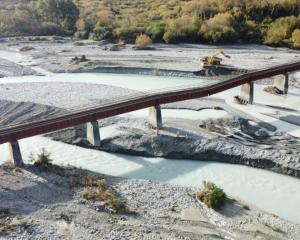Welfare rolls have increased for the first time in a June quarter since 2010, confirming other signs that New Zealand's economic growth is slowing.
Benefit numbers released today by the Ministry of Social Development show a continued improvement in Auckland, where there are now 5.4 per cent fewer beneficiaries than a year ago. Numbers also improved in the latest quarter in the Bay of Plenty and, marginally, in Northland.
But seasonal winter increases in unemployment combined with a sharp fall in farming confidence to push total benefit numbers up in the June quarter in all other regions for the first time in five years.
Numbers are still lower than a year ago in 10 of the country's 15 regions, and by 2.8 per cent nationally, to the lowest national June tally since June 2008 before the global financial crisis hit.
Social Development Minister Anne Tolley said the year-on-year comparison gave a truer picture of trends because the quarterly data were affected by seasonal influences.
"As a consequence benefit numbers have increased by 0.4 per cent, or 1089, in the last quarter as is expected with the end of seasonal work," she said.
But Council of Trade Unions economist Dr Bill Rosenberg said the stalling benefit numbers confirmed other signs that job growth was slowing.
"We are seeing some job losses. It's hard to say there is a trend yet, but certainly there is a lot of concern that the growth in the economy is slowing," he said.
The data comes one day after the country's biggest company Fonterra said it would cut 523 jobs in the wake of a 64 per cent plunge in global dairy prices since April 2013.
AMP Capital yesterday scaled down its forecast of New Zealand economic growth to 2.3 per cent in 2015 and 2.2 per cent next year, down from its April forecasts of 3.2 per cent and 3.1 per cent.
Dr Rosenberg said that meant the unemployment rate might not fall below its March rate of 5.8 per cent of the workforce.
"My fear is that unemployment will at best not get any worse but may start increasing again," he said.
The regional benefit pattern suggests that only Auckland and its nearby regions are still creating jobs faster than the growth in population. Even Canterbury, where benefit rolls fell fastest in the year to March (down 6.9 per cent), appears to have slowed sharply in the June quarter, with benefit numbers now only 3.3 per cent lower than a year ago and 2.1 per cent higher than in March.
People on jobseeker support are bearing the main impact of the slowdown, rising 1 per cent in the latest quarter to 118,072. Jobseeker numbers fell by 4.1 per cent in the year to March but the improvement slowed to 2.5 per cent in the year to June.
In contrast, sole parent support numbers kept falling strongly by 6.5 per cent in the latest year, only slightly dampened from a 7.2 per cent drop in the year to March, as new welfare policies continue to push sole parents back to work. Only 69,240 people are now on sole parent support, the lowest figure for 25 years.
Numbers on the other main benefit, the supported living payment, continued to creep up by 0.8 per cent to 93,959, about the same increase as last year, reflecting our ageing population.
Young people have done best out of recent economic growth. Beneficiary numbers dropped in the past year by 5.2 per cent for people aged 18 to 24, by 2.1 per cent aged 25-39 and by 4.2 per cent aged 40-54.
Beneficiary numbers aged 55 to 64 increased slightly by 0.3 per cent as growing numbers in that age group swamped increasing employment.
Pacific beneficiaries dropped by 4.9 per cent over the year, Europeans by 3.6 per cent, Maori by 1.5 per cent and Asians and others by 2 per cent.
The total of 285,349 people on benefits in June represented 10.3 per cent of the 18 to 64 age group, down from 10.8 per cent a year ago and 12.5 per cent in June 2010. It is the lowest since June 2008, when beneficiary numbers dipped briefly below 10 per cent to 9.9 per cent.
* For more information visit: http://www.msd.govt.nz/about-msd-and-our-work/publications-resources/sta...
By Simon Collins of the New Zealand Herald












